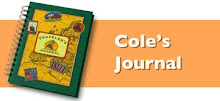
Upon leaving Dublin, our first stop was the Rock of Cashel. This was the seat of the ancient Kings of Munster from 300 – 1100 A.D., and a spot where St. Patrick often preached. Next it was on to the farm we were staying, but first I must comment on the road system in Ireland. Once you leave the city, “taking the main road” can be a bit misleading. Roads twist and turn, and are often barely wide enough for 2 compact cars to pass. The shoulder is usually a stone wall, and just to add to the fun, don’t forget to drive on the left side of the road. Not once during our time in Ireland did we encounter any road construction, so I guess they’re content on keeping things nice and rural.
Once we finally arrived, the farm we stayed was terrific. Surrounded by rolling hills and green pastures, we were welcomed by the many sounds of the farm animals. Cole really hit the jackpot, as not only did the farm offer tons of exploring space, but they also had a boy his age named David. David was big into his Gaelic Football and soccer, as is every boy around here, and so the two of them played every chance they could. New calves were also born both days we were there so David and his father took us to meet the new additions.
The next morning we planned our drive around the Dingle peninsula, a landscape full of dramatic scenery and ancient reminders dating back over 6000 years. The tip of this particular piece of land is also the farthest west you can get in Ireland and interestingly, the first piece of land Charles Lindbergh saw on his way to Paris in 1927. While the scenery was terrific, one of the best stops around the peninsula was a school that Angie’s friend Marcus had put us in touch with. It was a primary school (primary schools are K-6 and secondary schools are 7-12) that was taught in all Gaelic (except for English class). To keep the old Irish language and traditions alive, the Irish government provides subsidies to this part of the country. Signs, menus, schools, etc., are usually all in Gaelic. The kids got to visit the different classrooms to meet the other kids where they were treated to a few songs and stories (in Gaelic of course). We were also taught that it was St Brendan the Navigator who discovered America and not Christopher Columbus. In the 6th century, almost 1000 years before Columbus, St. Brendan is said to have sailed from the Dingle peninsula, and was the first to reach the “Land of Promise”. The video below is a song about him rowing to America.








.jpg)




 Singing at the Gaelic School.
Singing at the Gaelic School.


